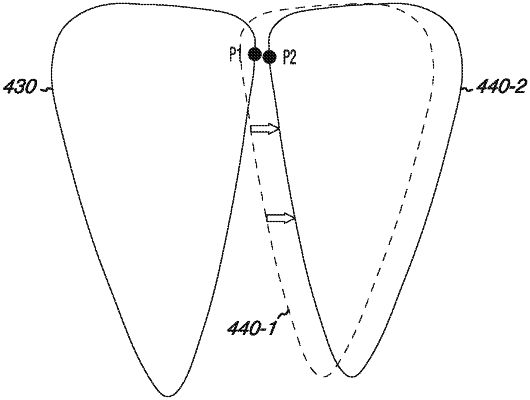| CPC A61C 7/002 (2013.01) [A61B 5/1128 (2013.01); A61B 5/7246 (2013.01); A61C 7/00 (2013.01); G06F 3/041 (2013.01); G06F 30/20 (2020.01); G16C 20/70 (2019.02); G16H 50/50 (2018.01); G06T 2210/12 (2013.01); G16H 20/40 (2018.01); G16H 30/40 (2018.01)] | 20 Claims |

|
1. A system for orthodontic treatment planning, the system comprising:
one or more computing devices configured to evaluate implementation of an orthodontic treatment plan, wherein the one or more computing devices includes memory having executable instructions stored thereon that, when executed by one or more processors, cause the one or more computing devices to perform a method comprising:
generating a target dental model by modifying an initial dental model, wherein the initial dental model represents a patient's dentition at an initial stage of the orthodontic treatment plan, and the target dental model represents a target outcome for the patient's dentition;
graphically marking dental references on the target dental model based on a user's input to a graphical user interface, wherein graphically marking the dental references comprises assigning contact points between adjacent first and second teeth of the target dental model;
generating a treatment outcome dental model representing the patient's dentition after at least a portion of the orthodontic treatment has been completed, wherein the adjacent first and second teeth overlap in the treatment outcome dental model;
mapping the dental references marked on the target dental model to the treatment outcome dental model by:
calculating and applying a translation to minimally separate the first and second teeth from each other in the treatment outcome dental model; and
calculating contact points between the first and second teeth in the treatment outcome dental model using collision detection between the first and second teeth; and
calculating an individualized treatment index score for the treatment outcome dental model according to differences between the contact points of the target dental model and the contact points of the treatment outcome dental model.
|